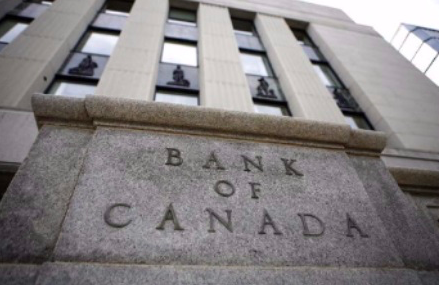
It has been a newsworthy few weeks to start off the year and for all us wishfully thinking that we would ease into 2021, I think we can admit that we were mistaken. Fortunately, hockey is back and better than ever with an all Canadian division and re-established rivalries. Virtual lines are being drawn in the sand all across the country.
Rates and Curves
As we approach the conclusion of the second trading week of the year, the 5-year GOC and 10-year GOC currently stand at 0.44% and 0.83% respectively. The 5-year is up 7 bps in 2021 and 10-year is up 18 bps in 2021.
The idea of additional fiscal stimulus with the continuation of monetary policy has given this bond market selloff some serious momentum over the last few weeks. Although the outlook for near-term growth is dismal due to renewed lock downs in Ontario and Quebec, investors seem to be overlooking this fact and focusing in on vaccine distributions, economic growth and future inflation above what was previously expected.
Over to the credit curve, the 5-year CMB’s are currently yielding 0.70% and the 10-year is at 1.19%. Interestingly, spreads on the 5-year are down 3 bps from the start of the year over the risk-free Government of Canada bond while the bond yield is up 3 bps. A similar story with 10-year CMB’s as well – the bond us up 11 bps in 2021 while spreads are down 6 bps. This points to the demand and quality of CMB’s while overall yields on Government of Canada bonds continue to increase.
Canada Housing Trust (CHT) Issuance Levels
In 2020, CHT completed a total of $53.0 billion in CMB issuance, their largest annual borrowing ever. This included a reintroduction of the 3-year offering for the first time since March 2009 in addition to $15.0 Billion in the 10-year issuance bucket. For reference, 10-year issuance in 2019 totaled only $8.75 Billion. Moving forward, we hope to see similar large 10-year issuance sizes in order to continue supporting our clients seeking for 10-year mortgages.
During the heat of the first COVID wave, CMB spreads unsurprisingly widened out 25-30 bps however they ended off the year 5 bps tighter on the 5-year and flat on the 10-year which speaks to the excellent credit quality of the bond and covenant. Furthermore, consistent domestic demand and strong demand from US, Asian and Middle Eastern investors continue to help the strong performance of CHT’s bond issuance offerings.
In case you missed it
- Unemployment is slowly creeping up and now stands at 8.6% vs. 8.5% last month. Relative to the pre-pandemic peak in February 2020, Canada currently has 574K fewer jobs.
- Two 975 NHA MBS pools launched this week. The first being issued by Merrill Lynch totaling $642MM at a spread of GOC + 33. The second issuance was by Laurentian Bank totaling $341MM at the same spread of GOC +33. Maturities on both pools were December 2025.
- The Bank of Canada has a rate decision next week on January 20th. It is widely believed that there will be no major change in rate. Should the BoC cut rates next week, this would most likely lead to an additional steepening of the curve. Be sure to stay one step ahead by reading our First National rate announcement commentary published on the same day.
Neil Silverberg, Analyst, Capital Markets
Jan 15, 2021





 Bank of Montreal
Bank of Montreal
